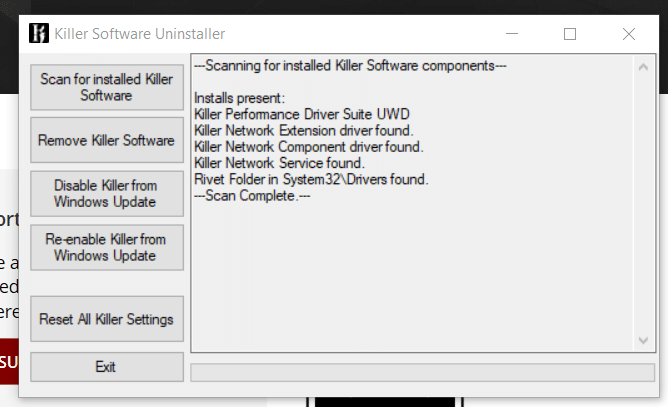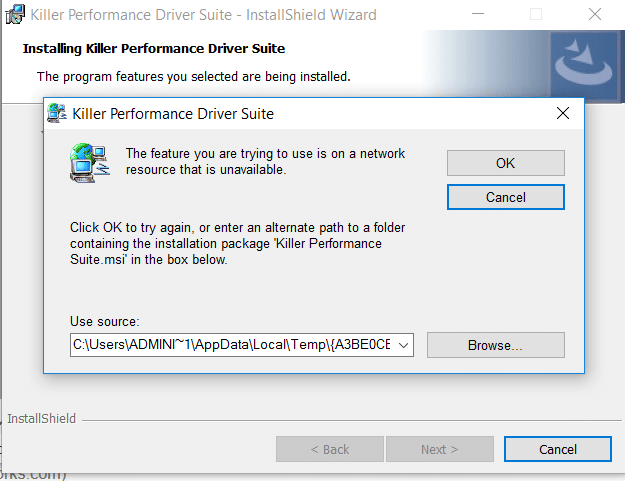
Killer Network Service is an incredible problem amongst users, some depend on it and others think it is quite useless. I will be explaining how to fix (and avoid) any issues the killer network service causes because that is usually the reason why people look for it.
It is a foundation executable so individuals don’t actually know about it much until something goes wrong. I will also be clarifying all about it just after I explain. However tips on the best techniques on how to fix the problems the service causes.
What you need to know now is that the killer network administration isn’t a Windows application, it doesn’t actually do much of anything great (according to some experts, I say it does a little bit of good) and it isn’t named as malware by the same either. Sometimes though it might give you issues like high CPU usage, these problems can be avoided by following these tips.
Also, Read: What Is Adobe Genuine Software Integrity Service? How to FIx on Windows & Mac
Covered Topics
Fixing Killer Network Service Issues

Some of the fixes below are preventive measures while some can help after the damage has been finished. Use the tips as per client inclinations to users appreciate and enjoy better framework speed.
1- Enabling Updates
This fix depends on the Windows Updates Service ensuring that each application and process is day by day updated and bugs that might sometimes store in-app processes will be cleaned as updates take place on a regular basis consistently.
This is a preemptive solution to ensuring that you avoid issues with measures that might lead to issues with the killer network service.
2 – Using The MsConfig To Disable Network Killer Service Auto-Start
The network killer service consequently starts up each time you turn on your system if it has been wired that way. At the point, when you notice that the executable is giving you a few issues, you should have to ensure the process is disabled.
This is the place where Microsoft Configuration comes in. Open the MsConfig menu and check the applications and processes that auto-start and afterward disable the killer network service. MSconfig opens up the task manager where you can deal with this feature. This fix works preemptively however it additionally works after issues emerge with the network administration.
3 – Using Restore Points
These are points in a framework’s timeline when each and every process worked alright. The system makes automatic restore points and permits clients to create a manual restore point as well. Create restore points as you utilize your system so when you experience issues, you can easily go back to that point where your system functions well.
You will lose a considerable amount of data but then that data was probably what was hampering your framework. This is also significant because most times whenever our systems have issues, it is a new application or process that caused it.
The restore points can help keep up healthy starting stages for your system. To get a restore point, follow these steps: Type system recovery and open the control panel application. On this application, click on Open system recovery.
4 – Using The Restore Health Command
This works for Windows 8 or more so in case you’re utilizing a Windows version that is lower, this isn’t the most ideal alternative for you. Instead of tinkering with the entire operating system whenever we have issues that the killer network service caused, we can simply dispatch the Command Prompt (admin) and input this command. This command usually helps fix your system without you doing a lot of anything. You will also not lose any significant information while the maintenance occurs.
5 – Using A 3rd Party Antivirus App Or Inbuilt Windows Defender
This is also an action that prepares against the killer network service issues even before they emerge. I will encourage clients to check every day to stay up to date with any potential threats and to also quickly uninstall applications that aren’t being used any longer.
Another significant cleanup site is the caches. There are caches for many data measures, these are files that can easily be infiltrated by malware. Clear these caches and you will have ensured that you limit the chances of malware issues happening in your system.
Fix 6 – Completely Uninstalling The KNS
This is a last-ditch fix that thoroughly gets rid of the whole network service process. Because it is not a core Windows file, it has almost or no significance to your processes and if it is gone, you probably won’t notice it. You can uninstall the assistance by navigating to the Control Panel in your Settings menu and following the process of uninstallation.
You can also navigate to Program and Features. Select the Killer Network Manager Suite and uninstall it. Make sure to utilize the same process to uninstall the Killer Wireless Drivers to ensure that the uninstallation is finished.
This strategy possibly works best if clients have concluded that the assistance is not a lot of utilization to their systems. Like we earlier discussed, the jury is still out on the killer network service being an interaction that is significant.
Fix 7- Using The ResMon Command
Like the Restore Health fix, this command analyzes diagnose your system and pinpoints exactly the processes that are causing your system issues. This command works for the most significant issues a system can confront so it is a really recommended tip if you need to find out where to fix it.
This fix ensures that clients don’t need to reinstall their operating systems whenever issues occur, they can simply find out exactly where the issues lie. To use this component, open a run dialog (Windows key +R) and type Redmon. In the applet that opens search for the process, right-click on it, and end it.
Conclusion
I have explained 8 ways to fix the issues that the killer network service will sometimes cause. These fixes can be used even before you notice any problem with your systems. In fact, I’d advise you to use it more now that your system is okay and not wait until your system starts crashing before fixing it.
You can uninstall the killer network service or keep it. It usually doesn’t make a big difference to systems so if you feel it is worth the trouble then you can just manage it with the preemptive fixes and ensure it does its function of enhancing your online gaming. If you feel it isn’t worth the hassle, disable the process following the tips suggested above.
Have you ever had issues with the killer network service? Did any of the fixes above work for you? Do you feel like the KNS is important to systems or just harmful? We would really love to know what your views are concerning it, please use the comment section below to share your opinions.
